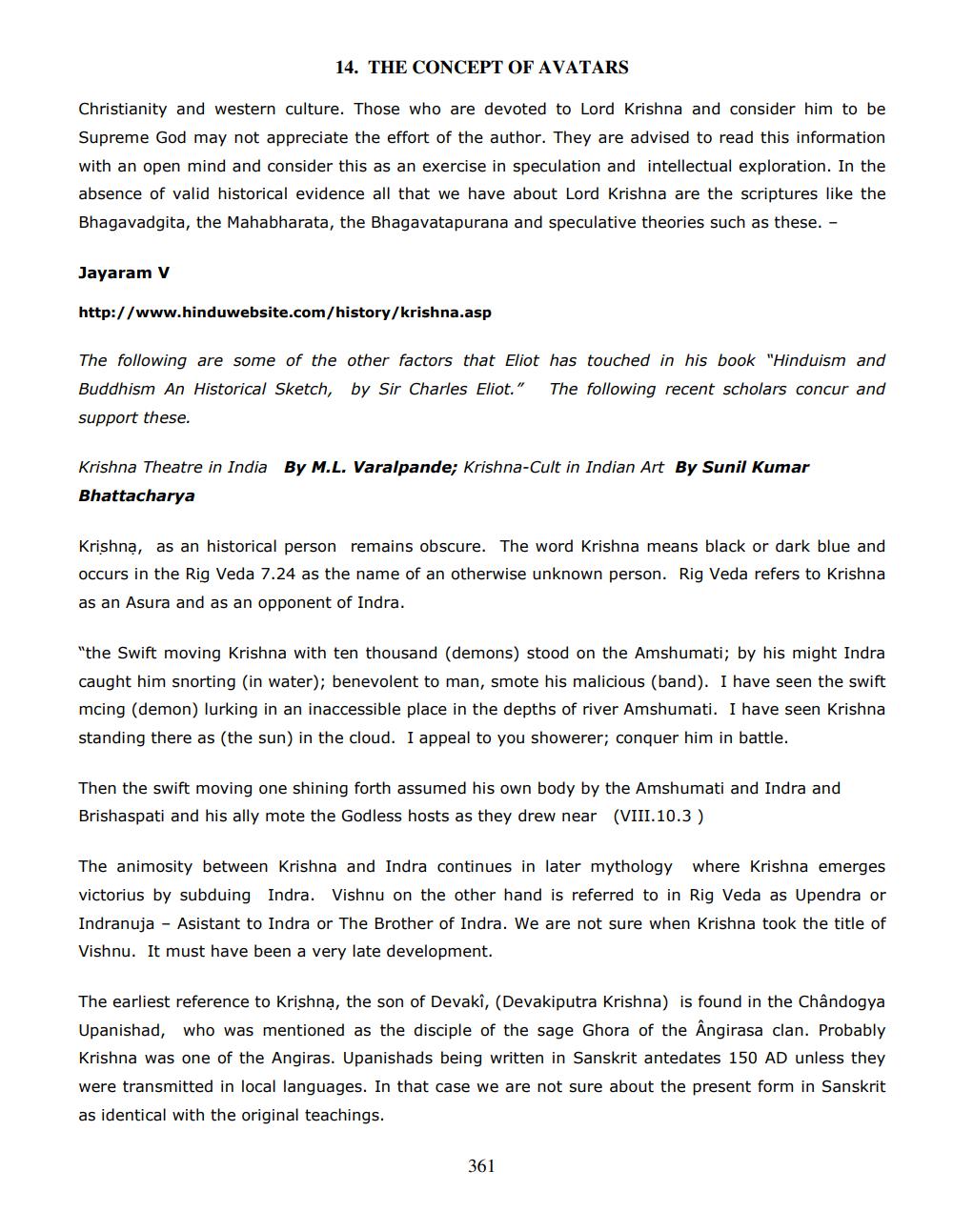________________
14. THE CONCEPT OF AVATARS
Christianity and western culture. Those who are devoted to Lord Krishna and consider him to be Supreme God may not appreciate the effort of the author. They are advised to read this information with an open mind and consider this as an exercise in speculation and intellectual exploration. In the absence of valid historical evidence all that we have about Lord Krishna are the scriptures like the Bhagavadgita, the Mahabharata, the Bhagavatapurana and speculative theories such as these. -
Jayaram V
http://www.hinduwebsite.com/history/krishna.asp
The following are some of the other factors that Eliot has touched in his book "Hinduism and Buddhism An Historical Sketch, by Sir Charles Eliot." The following recent scholars concur and support these.
Krishna Theatre in India By M.L. Varalpande; Krishna-Cult in Indian Art By Sunil Kumar Bhattacharya
Krishna, as an historical person remains obscure. The word Krishna means black or dark blue and occurs in the Rig Veda 7.24 as the name of an otherwise unknown person. Rig Veda refers to Krishna as an Asura and as an opponent of Indra.
"the Swift moving Krishna with ten thousand (demons) stood on the Amshumati; by his might Indra caught him snorting (in water); benevolent to man, smote his malicious (band). I have seen the swift mcing (demon) lurking in an inaccessible place in the depths of river Amshumati. I have seen Krishna standing there as (the sun) in the cloud. I appeal to you showerer; conquer him in battle.
Then the swift moving one shining forth assumed his own body by the Amshumati and Indra and Brishaspati and his ally mote the Godless hosts as they drew near (VIII. 10.3 )
The animosity between Krishna and Indra continues in later mythology where Krishna emerges victorius by subduing Indra. Vishnu on the other hand is referred to in Rig Veda as Upendra or Indranuja - Asistant to Indra or The Brother of Indra. We are not sure when Krishna took the title of Vishnu. It must have been a very late development.
The earliest reference to Krishną, the son of Devakî, (Devakiputra Krishna) is found in the Chandogya Upanishad, who was mentioned as the disciple of the sage Ghora of the Ângirasa clan. Probably Krishna was one of the Angiras. Upanishads being written in Sanskrit antedates 150 AD unless they were transmitted in local languages. In that case we are not sure about the present form in Sanskrit as identical with the original teachings.
361




